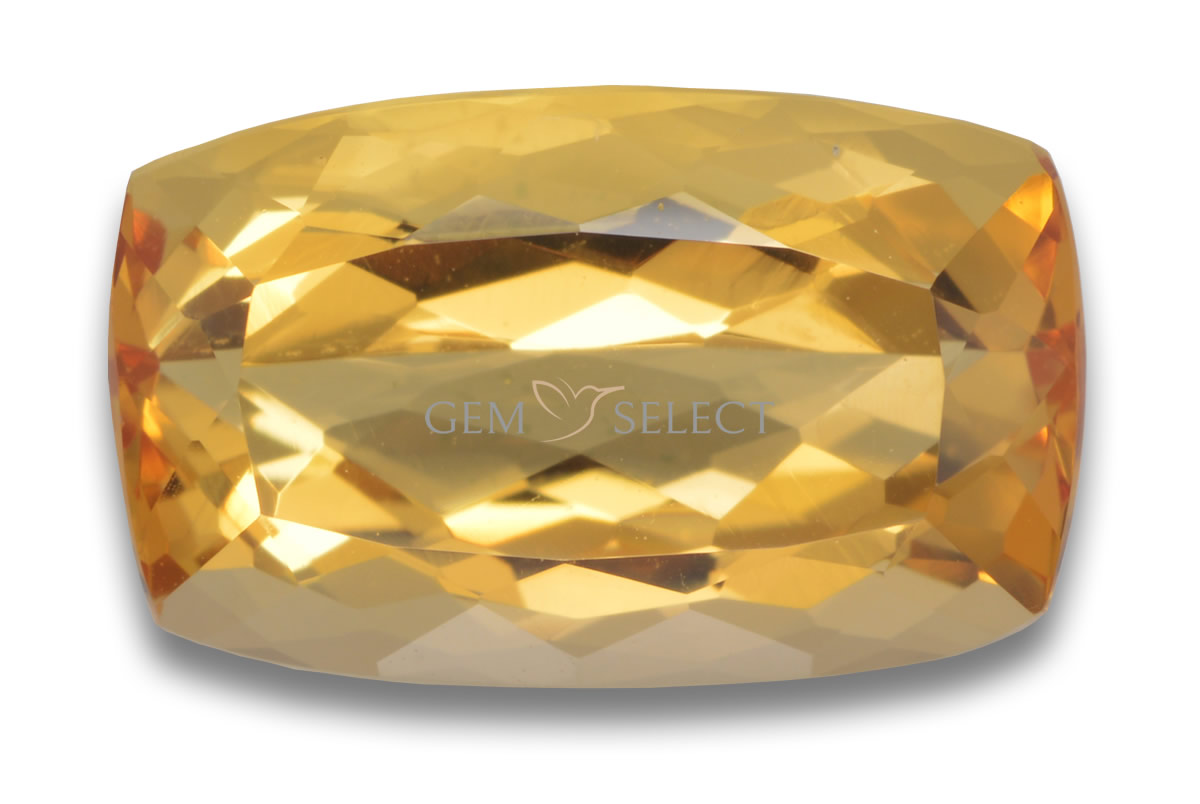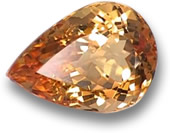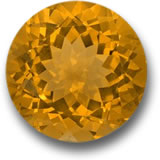Imperial Topaz Gemstone Information


About Imperial Topaz - History and Introduction
Imperial topaz, also known as precious topaz, stands out for its stunning golden and orange hues, making it one of the most sought-after varieties of topaz. Its name comes from the Russian tsars of the 17th century, who claimed exclusive rights to the pink topaz gemstones mined in Russia. Picture this: a gemstone that mirrors the color of the setting sun – that's imperial topaz for you. It's less common than other types of topaz, which adds to its exceptional value. Prized for its vibrant colors and remarkable clarity, imperial topaz isn't just a hit with gem collectors; it also shines in the world of fine jewelry. If you're curious, check out collections of loose imperial topaz available for sale. For detailed information on topaz gemstones in general, explore further resources.
Identifying Imperial Topaz
So, what exactly is imperial topaz? It's typically yellow, pink, or pink-orange, with the natural pink variety being quite rare. Brazilian imperial topaz spans colors from bright yellow to deep golden brown, and occasionally even violet. You can distinguish it from other pink gems like kunzite, tourmaline, sapphire, and ruby by its hardness – it scores an 8 on the Mohs hardness scale. Ruby and sapphire are tougher at 9, while kunzite and tourmaline are softer.
For yellow imperial topaz, hardness helps again; citrine and brazilianite fall short. Gems like apatite, fluorite, and zircon might show up in pink or yellow, but they're softer than topaz. Phenakite in yellow or pink has a trigonal crystal structure, unlike topaz. Spinel stands out with its cubic structure. Yellow chrysoberyl is harder and has a higher refractive index. Precious beryl shows indistinct cleavage, setting it apart from imperial topaz's perfect cleavage.
Imperial Topaz Origin and Gemstone Sources
Commercially mined imperial topaz mainly comes from Ouro Preto in Brazil, with additional deposits in the Urals of Russia.
Buying Imperial Topaz and Determining Its Value
Imperial Topaz Color
Originally, imperial topaz was seen as orange with red dichroism. Today, the term covers a broader range, including yellow, pink, red, lavender-pink, and peach-pink. Keep in mind, the color might fade gradually if exposed to sunlight over time. To learn more about the various colors of topaz gemstones, consider additional guides.
Imperial Topaz Clarity and Luster
Imperial topaz ranges from transparent to translucent, boasting high clarity with minimal inclusions. You can often spot "eye clean" stones just by looking – no visible imperfections. It's celebrated for its brilliance and that glassy, vitreous luster.
Imperial Topaz Cut and Shape
Imperial topaz is super versatile, so it gets cut into all sorts of shapes: square, round, octagon, pear, oval, heart, and even fancy ones. Strongly colored gems usually get a scissor cut, while lighter ones shine with a brilliant cut to highlight their sparkle and clarity. If there are irregular inclusions, a cabochon cut is common. Its hardness resists scratches, but cutters have to be careful because of that perfect cleavage – it can fracture easily.
Imperial Topaz Treatment
Most imperial topaz isn't treated or enhanced. That said, orange-brown pieces can undergo heat treatment called "pinking" to achieve a purplish-pink shade. Natural pink topaz is rare and pale, found in Pakistan. Sometimes topaz gets coated for vivid pink or to mimic imperial topaz. Trustworthy traders always disclose these treatments.
Imperial Topaz Gemological Properties
|
Chemical Formula: |
Al2SiO4(F,OH)2 Fluor containing aluminum silicate |
|
Crystal Structure: |
Orthorhombic, prisms with multi-faceted ends, often octagonal in cross-section |
|
Color: |
Yellow, pink, pink-orange, orange or red |
|
Hardness: |
8 on the Mohs scale |
|
Refractive Index: |
1.609 - 1.643 |
|
Density: |
3.49 - 3.57 |
|
Cleavage: |
Perfect |
|
Transparency: |
Transparent and translucent |
|
Double Refraction or Birefringence: |
0.008 to 0.016 |
|
Luster: |
Vitreous |
|
Fluorescence: |
Under long wavelength UV, pink and yellow can show a strong orange-yellow glow; red shows a weak yellow-brown glow |
Please refer to our Gemstone Glossary for details of gemology-related terms.
Imperial Topaz Gemstone Mythology, Metaphysical and Alternative Healing
Ancient Greeks thought topaz boosted strength and could even grant invisibility to the wearer. Egyptians and Romans linked yellow topaz to the Sun God. It's the birthstone for November babies and Sagittarians, plus it marks the 23rd wedding anniversary. In Indian traditions, topaz opens the throat chakra, aiding communication and self-expression – perfect for artists, writers, and speakers. Some folks believe it enhances virility in men.
| Disclaimer: Metaphysical and Alternative Crystal Healing Powers and Properties are not to be taken as confirmed advice. Traditional, Ceremonial and Mythological Gemstone Lore is collected from various resources and does not represent the sole opinion of SETT Co., Ltd. This information is not to replace the advice of your doctor. Should you have any medical conditions, please see a licensed medical practitioner. GemSelect does not guarantee any claims or statements of healing or astrological birthstone powers and cannot be held liable under any circumstances. |
Imperial Topaz Gemstone and Jewelry Design Ideas
Imperial topaz's versatility means it works in rings, necklaces, bracelets, pendants, and more, cut into diverse shapes. Like with diamonds, protect it from hard knocks using secure settings for daily wear rings – its perfect cleavage makes it prone to fracturing. At 8 on the Mohs scale, it's tough against scratches and built to last.
Note: When buying colored gemstones, go by size rather than carat weight. These stones have varying size-to-weight ratios, so some are bigger or smaller than diamonds of the same weight.
Famous Imperial Topaz Gemstones
The renowned "Blaze Imperial Topaz" weighs 97.45 carats and is on display at the Field Museum of Natural History in the USA.
Imperial Topaz Gemstone Jewelry Care and Cleaning

Similar to diamond, imperial topaz has perfect cleavage, so a sharp blow could split it. Opt for protected bezel settings over prongs for everyday rings. Its hardness of 8 on the Mohs scale keeps it scratch-resistant and durable. For cleaning, just use soapy water and a soft cloth, rinsing thoroughly to remove residue. Skip ultrasonic cleaners and steamers, as with most gems. Remove jewelry before workouts, chores, or sports. Store it separately to prevent scratches – wrap in soft cloth or use a fabric-lined box.
Frequently Asked Questions
What is imperial topaz?
Imperial topaz is a variety of topaz known for its golden, orange, pink, or pink-orange colors, often called precious topaz.
Where is imperial topaz found?
It is primarily mined in Ouro Preto, Brazil, with deposits also in the Urals of Russia.
How can I identify genuine imperial topaz?
Check its hardness of 8 on the Mohs scale, crystal structure, and cleavage; compare to similar gems like citrine or sapphire.
Is imperial topaz usually treated?
Most isn't, but some undergo heat treatment or coating; reputable sellers disclose this.
How should I care for imperial topaz jewelry?
Clean with soapy water and a soft cloth, avoid impacts, and store separately to prevent damage.


